Over the years, foraging has become an integral part of the culinary program at Jordan Winery. I spend at least a few hours every week exploring the ranch and looking to see what edible wild plants, flowers, and other items I can harvest to use in my cooking. Coupled with the fruits and vegetables we grow in our culinary garden (and the honey harvested from our apiary), this approach contributes to our philosophy of giving our food a true sense of place.
Generally speaking, Jordan is located in a great spot to forage, especially spring foraging. Northern California—and Sonoma County more specifically—is a forager’s dream destination with its misty forests, winding rivers, rolling hills and oak lands. Here, in no particular order, are eight edible wild plants commonly foraged in our part of the world, and suggestions for how you can consume each.
Eight Edible Wild Plants to Forage
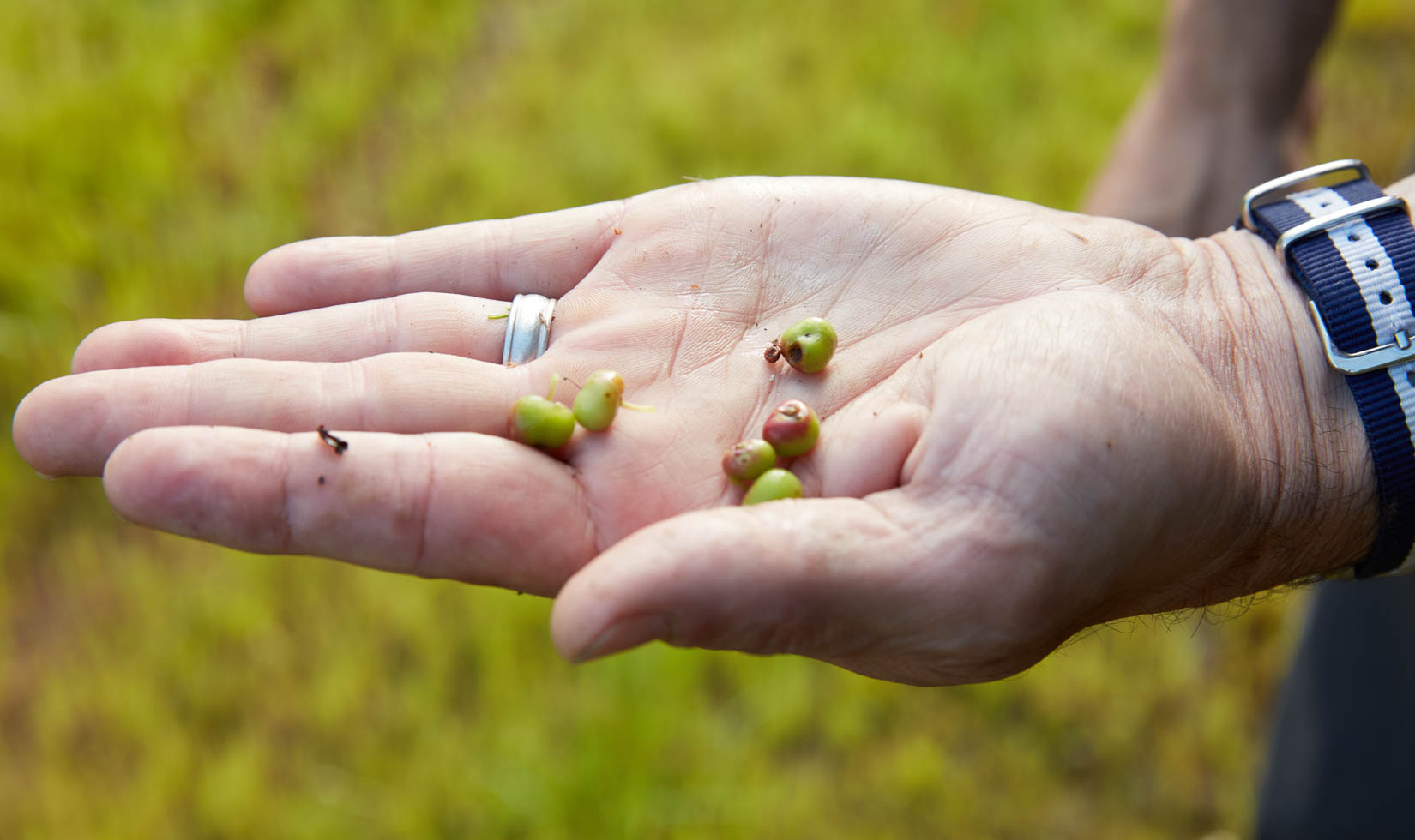
Manzanita Berries
The tiny red berries that grow on manzanita trees were an essential part of the Native American diet, and reportedly have three times the number of antioxidants as blueberries. That means they’re three times as good for you as blueberries. The manzanita berries are bitter on their own, but when combined with the right partners, they can be downright delicious. Once you’ve dried yours, try grinding them in a food processor with raw sugar. As part of this mix, the berries can be folded into dough for sweet-tart shortbread, or really any other recipe that calls for raw sugar.
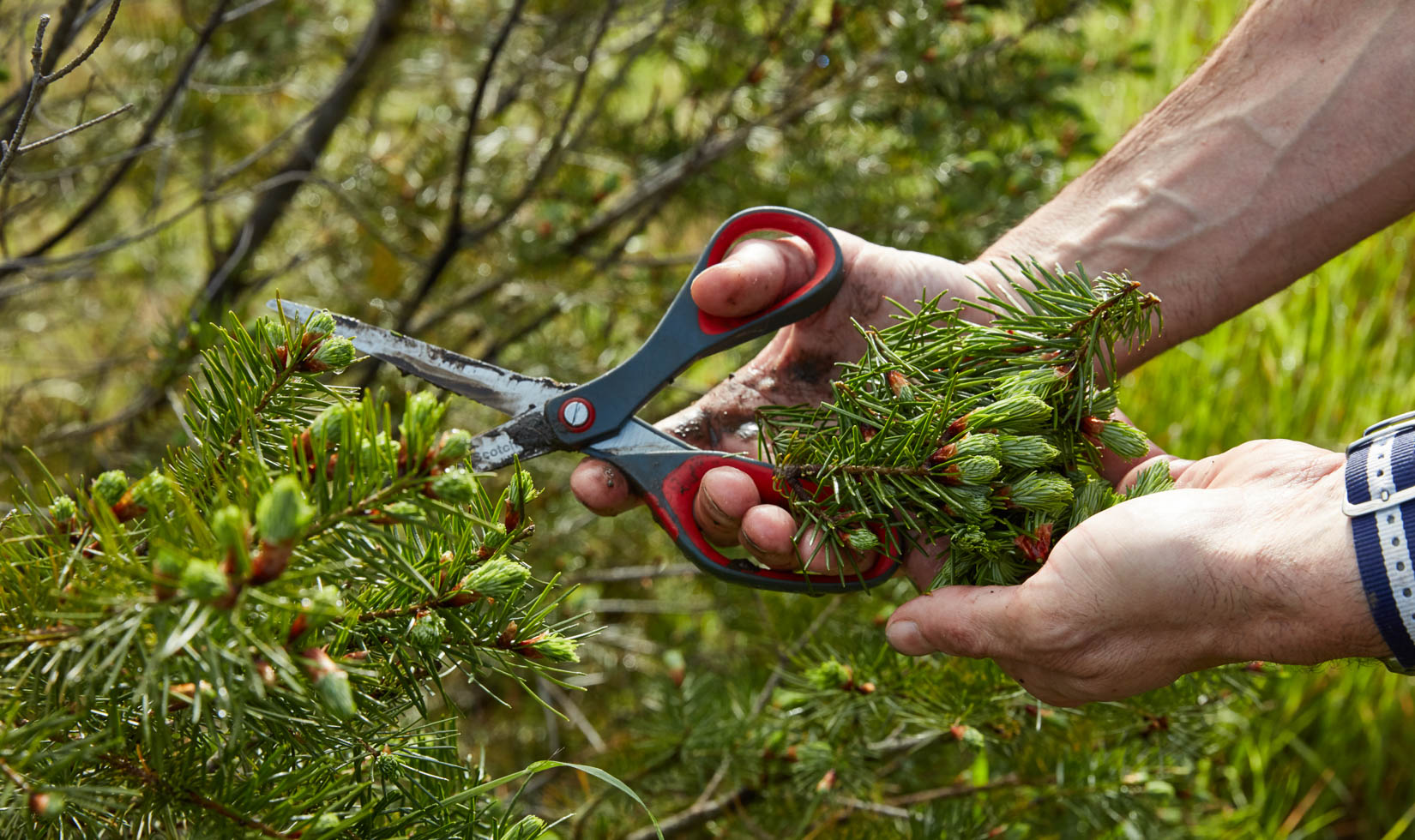
Pine Tree Buds
The medicinal qualities of pine are revered across the world; the tree’s buds are considered immune system boosters due to their high amount of Vitamin C. Harvest the buds in spring when flavor is sweet and subtle and not too pungent with resinous pine. To consume them, pulverize them with sea salt in a rustic mortar and pestle. The resulting vibrant green seasoning is best used as soon as possible to retain color and smell. The condiment works as a garnish for grilled meats, proteins or vegetables. Combined with marjoram and thyme, it also is a wonderful finishing salt for spring lamb. (View my spring lamb recipe.)
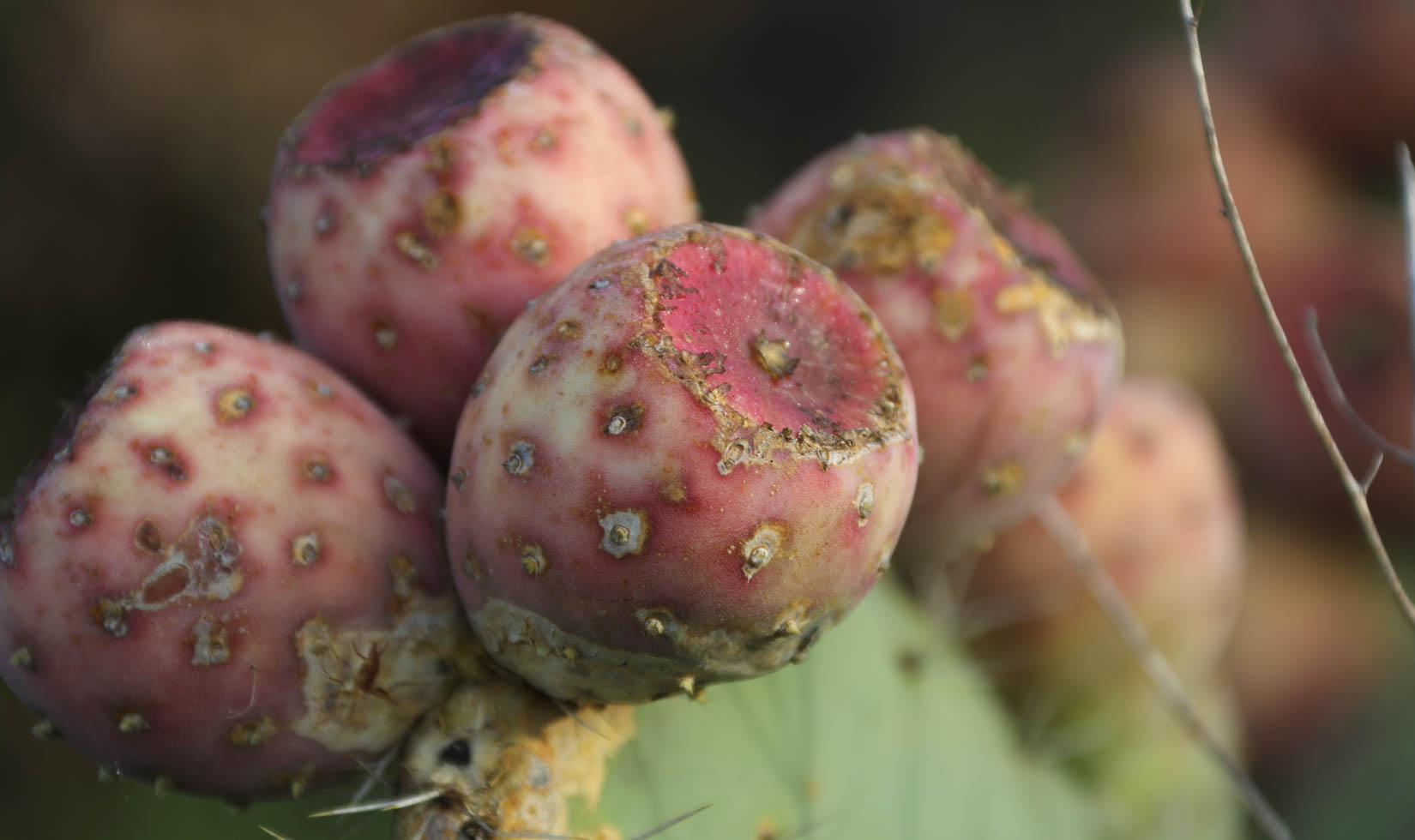
Prickly Pear
We harvest this blush-pink fruit each spring from the rugged and beautiful cactus plants just below Jordan Vista Point on our vineyard hike trail. It tastes like a cross between watermelon and ripe pear, so it’s great in ice cream and sorbets or even sliced on top of salads. (The seeds are edible, too.) Also known as tuna, nopalito and sabra, they’re native to the Americas but their fame and foraging has spread across the globe and evolved into different species. Health claims abound for the prickly pear, ranging from lowering cholesterol, to reducing arthritis pain, to lowering blood sugar. But before you run out and start foraging these healthful fruits, know to wear gloves since their common English name originated for a reason. Pick when they’re bright red and plump.
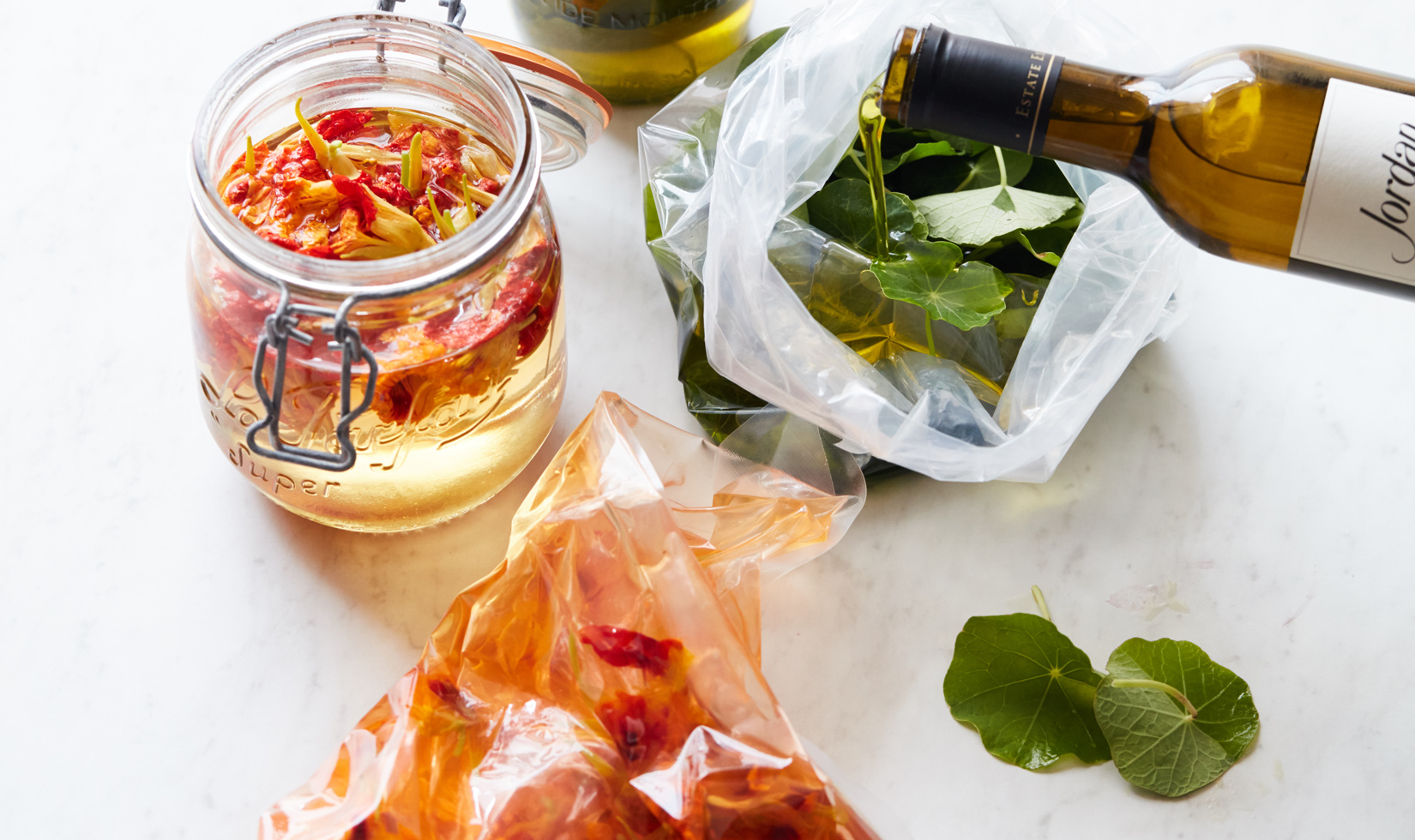
Nasturtium
Nasturtium is a common, wild flowering plant available to even the urban forager. Found in gardens, parks and the wild, these colorful and prolific flowers bring pepper, spice and jewel tones to summer and fall dishes. Harvest both the flowers and the leaves. Nasturtium flowers and leaves make for a beautiful, spicy garnish on any dish. I also like to include them in summer salads like my Kimchi Salad recipe. To preserve nasturtium’s zesty flavor, combine the flowers with verjus and a kosher salt in a Ziploc bag and leave it to macerate in the refrigerator for three days. At the same time, place the leaves in a separate one-gallon Ziploc bag, cover them with olive oil, massage the mix to bruise the leaves and place in the refrigerator to infuse for one day. When both bags are ready, strain the contents of each into a separate, sterile mason jar and store for up to two weeks. View my complete nasturtium vinaigrette recipe.
Bolete Mushrooms
We forage bolete mushrooms in spring and fall in the woodlands on Jordan Estate. Found widely in the Northern Hemisphere, the boletus edulis grows in forests and amongst thick trees in late spring, summer and fall. They especially like oak trees. Boletes are very difficult to cultivate, so you won’t find them often in markets, making this mushroom ideal foraging food. But make sure that you forage with an experienced mycologist since there are some bolete lookalikes. Once you’ve mastered their identification and secured your haul, boletes dry well and maintain much of their flavor. We use them in sauces for duck, lamb and beef and their flavor lends itself to any recipe calling for meaty mushrooms.
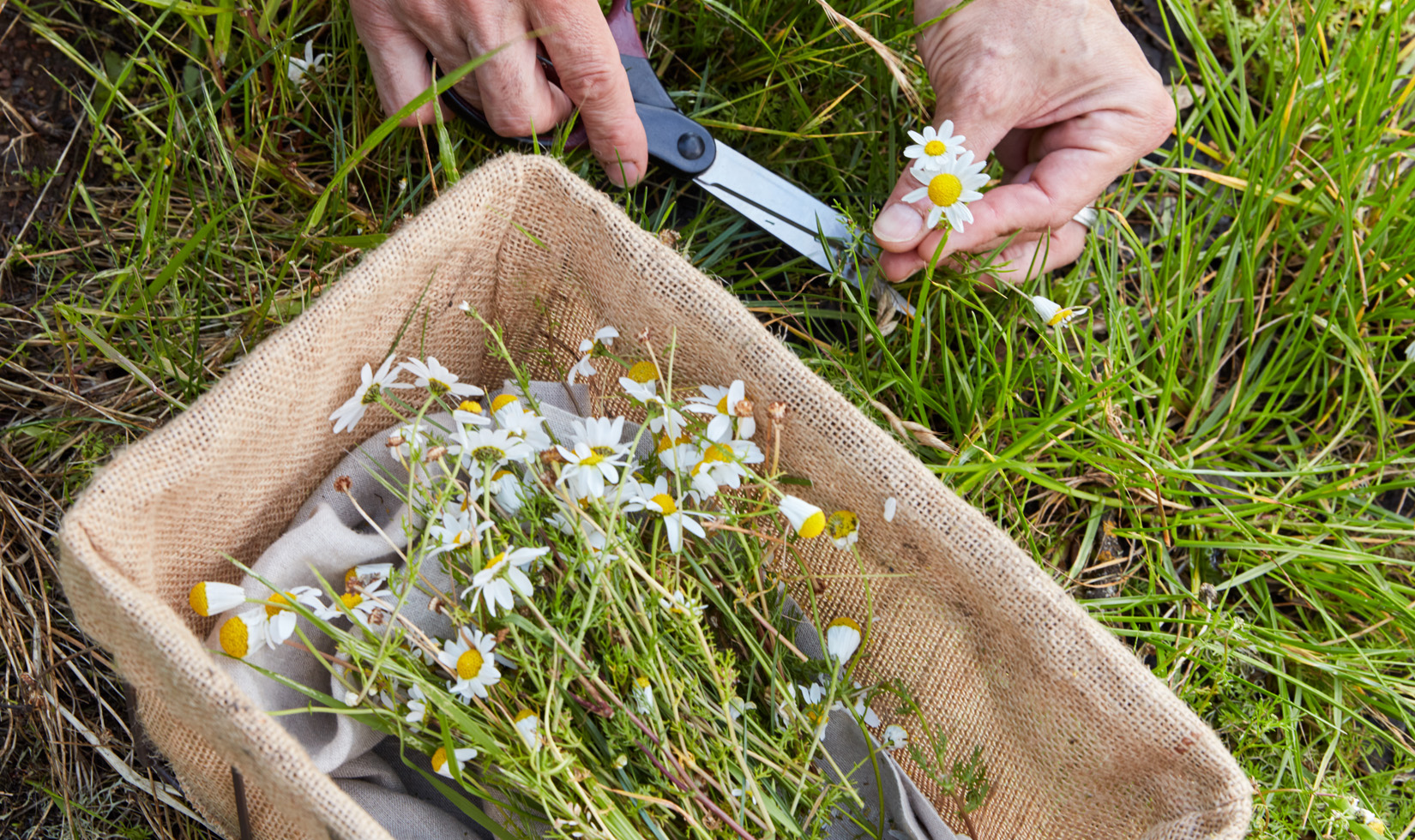
Chamomile
These wildflowers, which grow in meadows across the estate, are considered one of the most important herbs to Native Americans. They also make a mean, medicinal tea. Harvest them during the height of spring for maximum pungency; when you pluck them from the ground, try to get the stem and roots as well as the fragrant flower. When you’re ready to make tea, add madrone and manzanita bark, as well as clover, verbena, bay, nut, fennel, wild rose, even dried matsutake mushrooms for a fresh and layered flavor. This varied combination will have anti-inflammatory qualities and will contain tannins that kill unwanted microbes. View my foraged tea recipe.
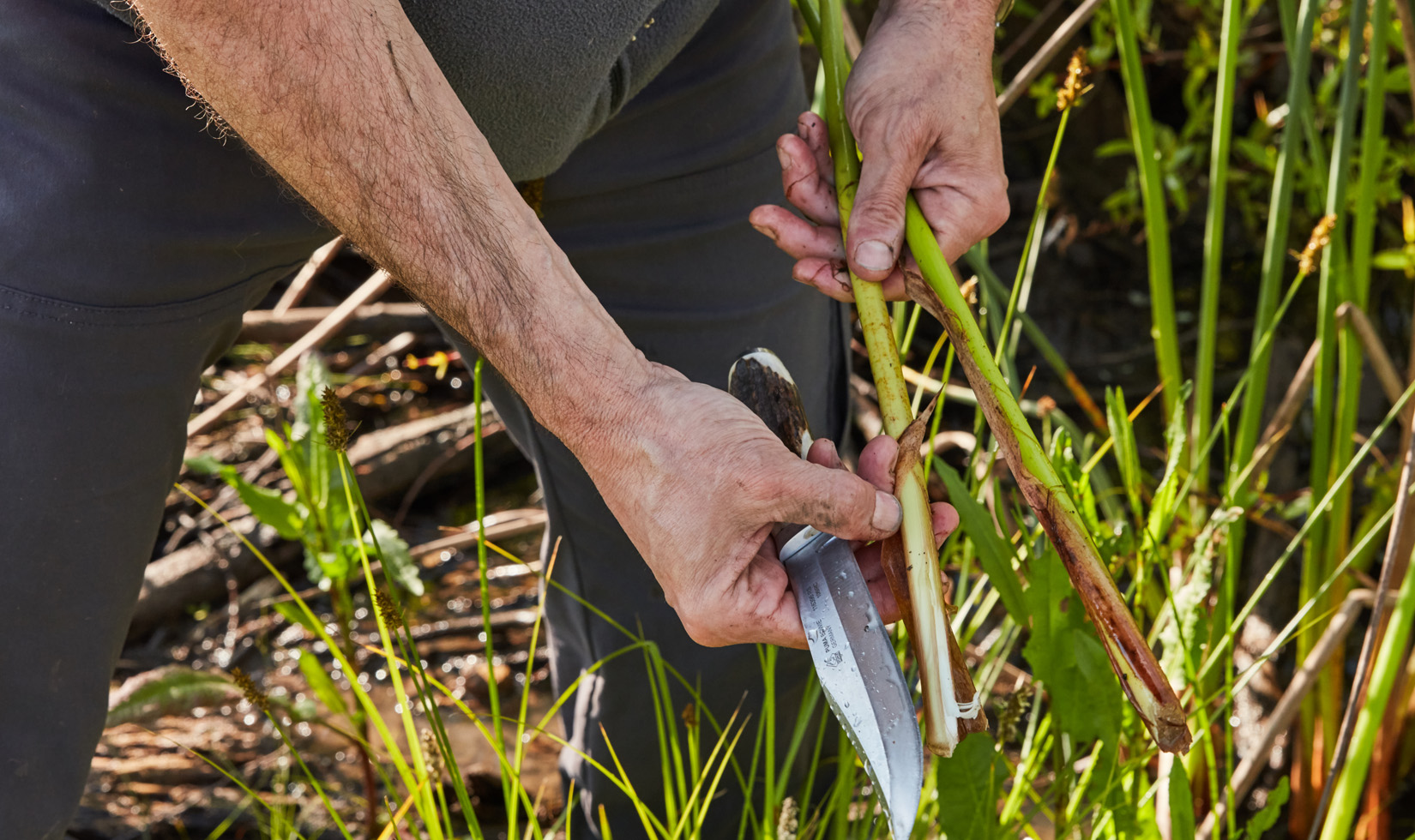
Cattails
Cattails, which were used by Native Americans to make shelter, rafts and baskets, often are found at the edges of lakes and rivers. Pioneer outdoorsman and wild foraging enthusiast Euell Gibbons called the cattail “the supermarket of the swamp” since they can also can be incorporated into a variety of different foods. If you like salads, use the tender shoots in spring salads with miner’s lettuce, nasturtium and other foraged items. If you prefer to bake, wait for the fall and collect golden pollen from the male flowers, then use it as a secret ingredient for savory olive oil cake. Cattail pollen also can be used as a topping for ice cream.
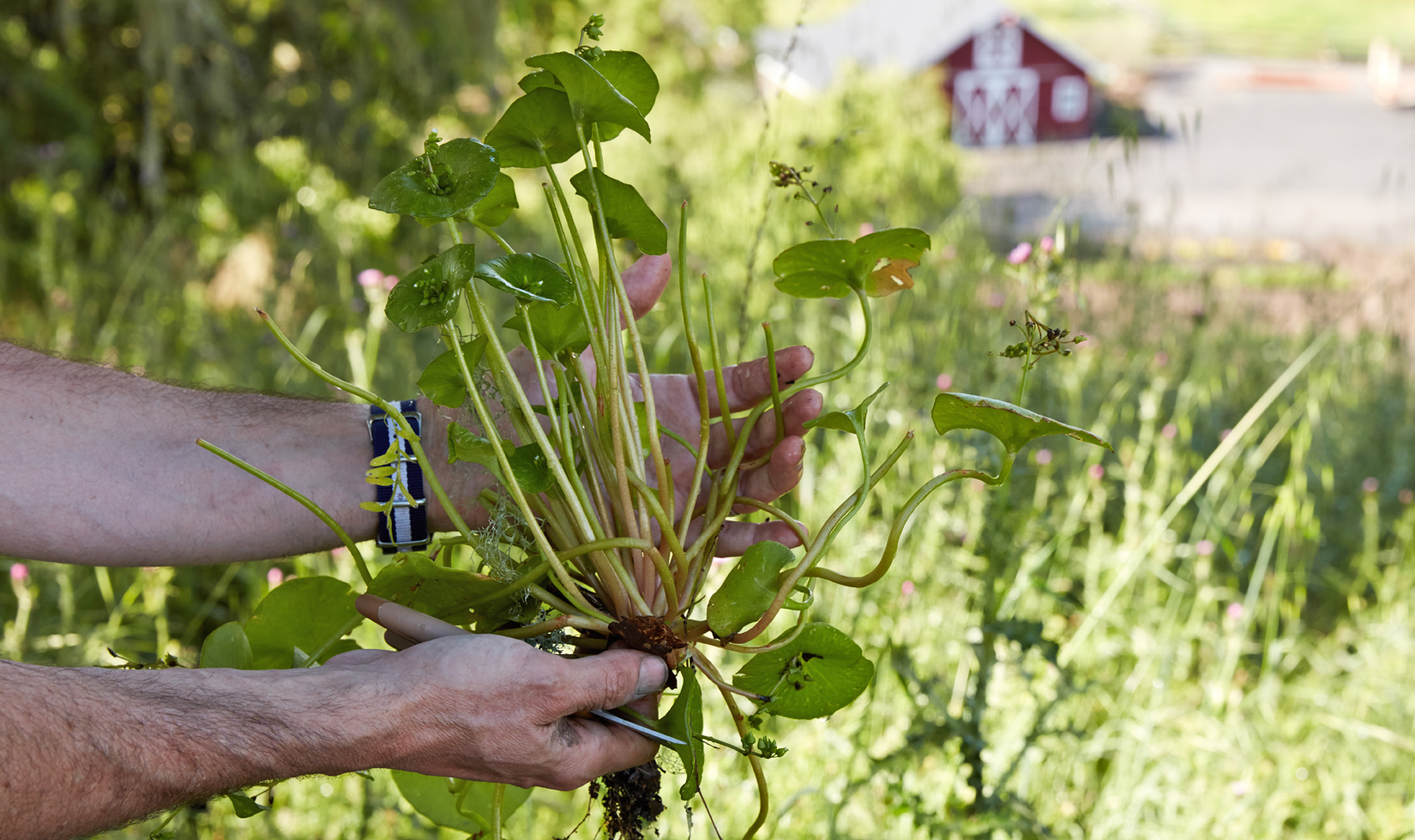
Miner’s Lettuce
Also known as Indian lettuce, this salad gift grows wild on the edge of the brushland near Jordan’s petit verdot vineyards and on the hill behind our solar panels. Miner’s lettuce—so named since California’s gold miners warded off scurvy with its high vitamin C content—is considered a world-class foraging find with its crunchy, mild-tasting, large leaves. This delicious, edible wild plant will jazz up any green salad, including this fava bean and tree blossom salad.
Armed with two legs, good weather and some foraging spirit, you can make a complete meal out of foraged foods. This adventure doesn’t have to be intimidating: Here’s a Beginner’s Guide to Foraging.



